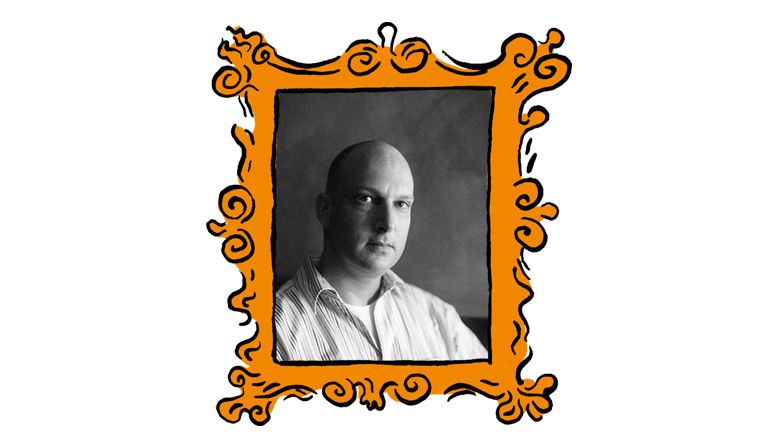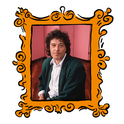If you were to ask me to name the most influential poetry book of the last decade, I would unhesitatingly say Claudia Rankine’s Citizen (2014). Not only did it articulate, with its exacting stories of racist interactions, the everyday reality of what was at stake in the Black Lives Matter movement—it also brought the prose poem out of its niche as an occasional form and into widespread use as a mode of eloquent testimony.
I would be harder pressed to name the most influential poetry book of the last 20 years. This month, however, an answer suggests itself. Unlike classic albums, collections of contemporary verse almost never get the luxury of an anniversary edition. Yet Richard Siken’s Crush, first published in 2005 by Yale University Press, has been given just that.
If you’ve never heard of Crush, or Siken, that might be because you’re like me: a straight man on the wrong side of 40 and therefore also a late Gen X-er who escaped adolescence before the internet hit. Although I’ve largely worked as a literary critic and academic since then, I only know about Crush through the enthusiasm of my Gen Y students. Millennials comprise Crush’s huge fanbase: more than 100,000 readers have bought a copy, and many more will have screenshotted individual poems as they circulated online and were translated into other languages.
Siken, however, is a decade older than me, which interestingly complicates his status as the voice of a generation. The anniversary edition tells the story of an unpublished debut collection awarded the Yale Series of Younger Poets Prize in 2004 by future Nobel laureate Louise Glück. The manuscript, completed in the mid-1990s, had been rejected many times; Siken thought it “a glimmering failure” and was about to give up. But then Dana Levin, one of the poets sifting submissions for judging, felt it fitted Glück’s brief: “Send it on if it has a pulse.”
Siken’s new afterword recalls the merciless edit Glück gave his “sloppy” draft. But it’s clear from her own foreword that she was only drawing out what was already there in Siken’s “hurtling unstoppable sentences” with their ability to modulate between “moments of viciously catty wit [and] passages of epigrammatic virtuosity”.
Crush, in other words, is extremely quotable, and that is its superpower as love poetry. For example, if you Google the sentence “Tell me how all this, and love too, will ruin us”—from the opening poem, “Scheherazade”—you will not only find it as an inspirational meme, but as a tattoo, an art print and a caption for dramatic gifs from TV shows (Levin wittily calls this “the rough and Tumblr realms of the internet”).
Siken seems to be happy about his meme fame (what poet wouldn’t be?) and has even encouraged it, commenting on Twitter: “you can take any of my quotes and apply them to any fandom or picture and they will work because they are sad and mopey and full of longing”. The self-disowning tone (“sad and mopey”) is one of Crush’s main characters: these poems are by turns intensely passionate and intensely detached, one moment immersed in emotion and the next seeing the whole situation as generic, a fake (“You want a better story. Who wouldn’t?”). It is the perfect poetic attitude for the generation who end sincere statements “lol”.
Siken’s afterword dwells on how, as Crush gradually found readers, many of them wanted to know if it was a true story. “I love the part where your boyfriend dies and you’re really sad,” says the bank teller: “How long were you together?”
Unnerving though he finds other people’s prurience and appropriation of his words—sometimes misquoting or misgendering them—Siken also sees that Crush’s enduring appeal lies in the openness of its metaphors, so that “what was originally a book about AIDS had arrived in a culture filled with vampires”, where blood had become an image of romance rather than contamination; later still, its world of lonely rooms resonated with people looking for poetry to post online during lockdown.
It is also a book of gay love poetry that has ridden the political wave of the word “queer” as it travelled, over three decades, from a homophobic slur to a positively asserted and capacious term of identity. That said, Siken surprisingly doesn’t feature in the excellent recent anthology 100 Queer Poems, and there is relatively little academic criticism on his work. This makes me wonder whether its popular success has seen Crush bypass literary recognition.
In calling the anniversary edition an “opportunity to provide backstage passes”, Siken wrily acknowledges his pop-star status. One recent anthology in which he can be found is Invisible Strings: 113 Poets Respond to the Songs of Taylor Swift—and later this year he will be honoured by a fan anthology himself. But although Crush is internet-famous, it shouldn’t be mistaken for a work of thin Instapoetry. As Siken notes, he wrote it with the “twentieth-century intention” of sharing his thoughts and feelings as a book.
The fact that Crush was composed in the 1990s, however, does make me think of it as a late-arriving work of postmodernism, the cultural buzzword of that decade. Frederic Jameson saw postmodern aesthetics as a kind of channel-hopping, collaging “pure and related presents in time”. That would certainly be one way to characterise the anxious, cinematic rush and flicker of Siken’s long lines, which scramble to narrate and control a dream-world of fugitive sex and violence: “He puts his hands all over you to keep you in the room. / It’s night. It’s noon. He’s driving.”
I can admire the pedal-to-metal intensity of these poems of heartbreak while knowing they will never mean as much to me now as they might have done in 1995. But I suspect Crush has not run out of road—or readers—yet.
The cult of Crush
Richard Siken’s poetry collection might just be the most influential of the past 20 years
May 29, 2025

© Richard Siken / Wikimedia Commons









